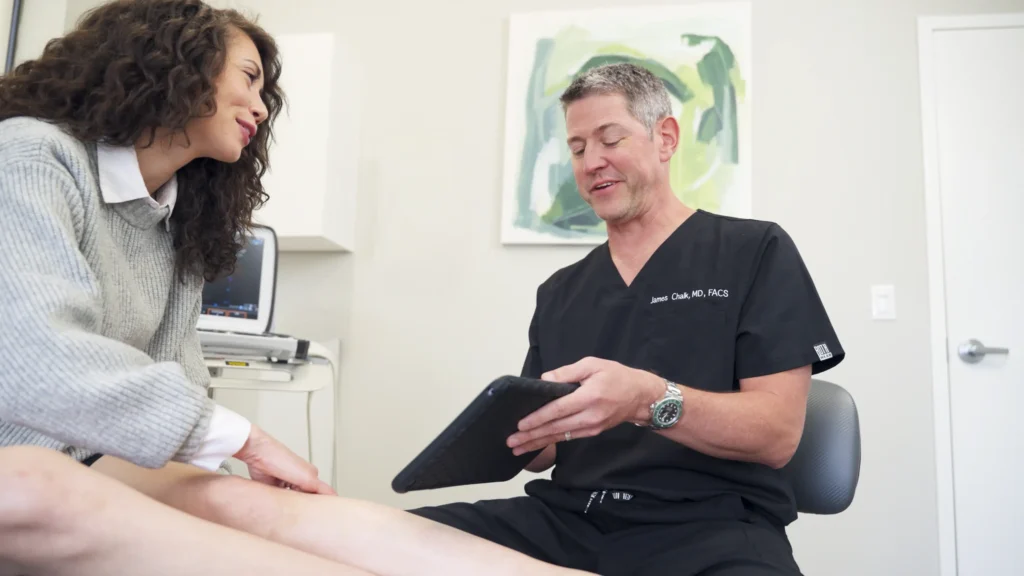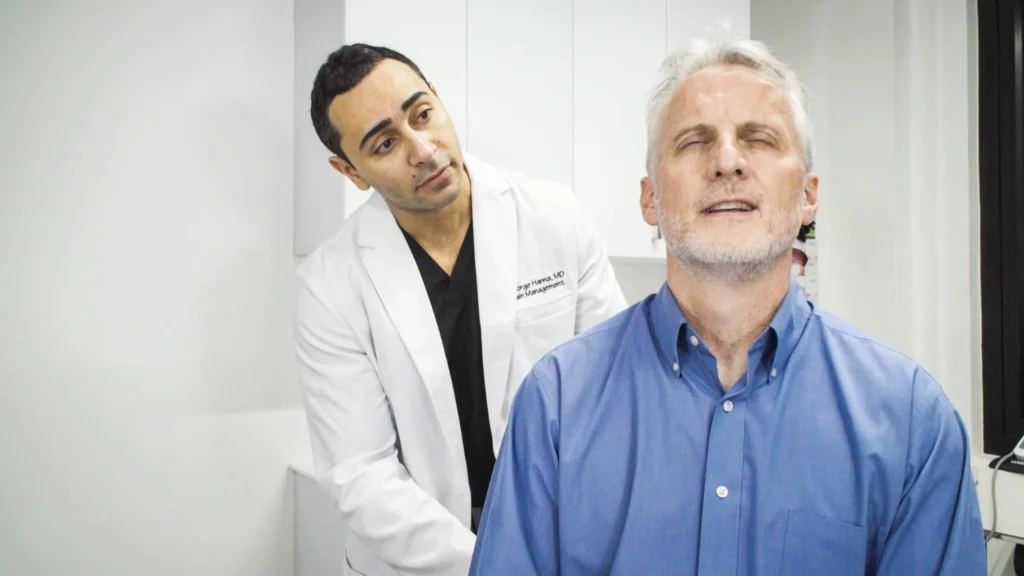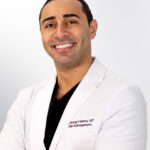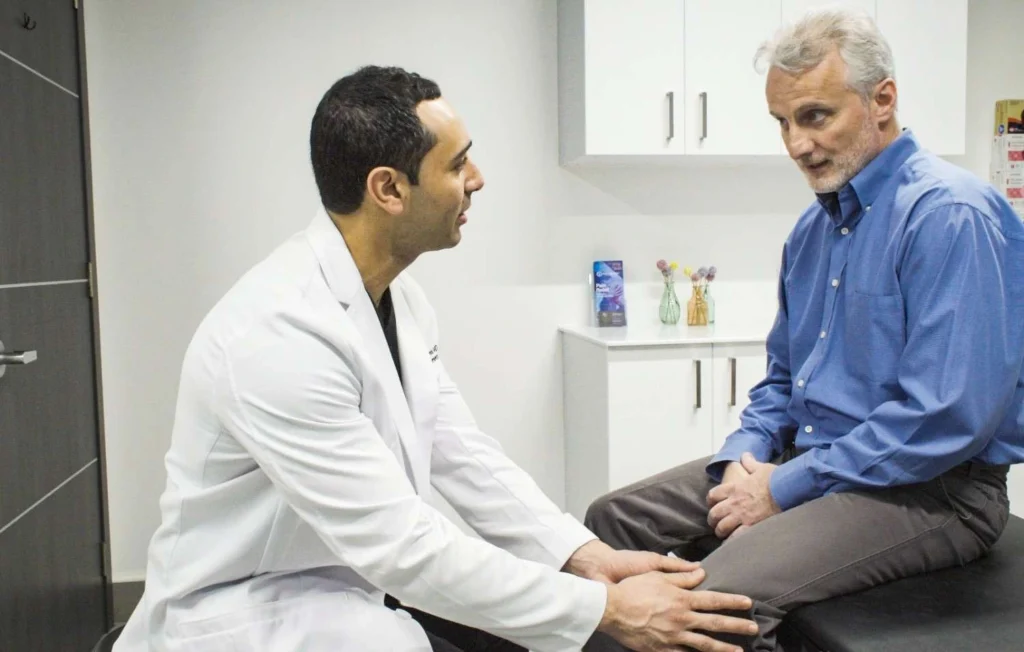What are the Complications of Burst Varicose Veins?
Are you currently suffering from varicose veins? If so, you might be wondering what might happen if those large protruding veins accidentally burst.
There are a number of risks associated with varicose veins such as skin infections, the formation of leg ulcers, swelling, pain, and discomfort. However, complications of burst varicose veins can be extremely dangerous and you have to be taken to an emergency room immediately.
Burst varicose veins can cause bleeding, followed by a potentially fatal medical condition called Deep Vein Thrombosis.
To prevent that from happening, you need to get your varicose veins treated immediately. Visit your local varicose vein specialist in NY or varicose vein specialist in NJ immediately before you accidentally suffer from burst varicose veins.
In this article, we’ll discuss what are the complications of burst varicose veins, how varicose veins are formed, and how to get them treated.
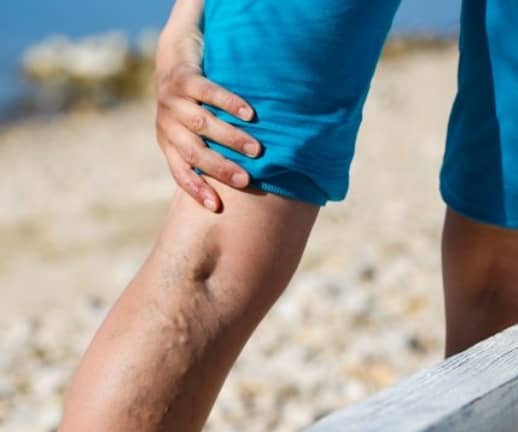
What are Varicose Veins?
Varicose Veins are large rope-like veins that can be seen bulging and protruding out of the surface of the skin. They are usually dark purple, blue, or red in color. And they are generally found in the legs and thighs.
Chronic Venous Insufficiency: The Cause of Varicose Veins
The primary cause of varicose veins is a medical condition called Chronic Venous Insufficiency.
Chronic Venous Insufficiency is a vein disease in which the valves of the veins malfunction. The valves generally act as one-way doors facilitating blood flow to the heart. When they malfunction, there’s nothing to prevent blood from flowing in the incorrect direction. As such, it causes blood to pool behind the valves in the legs.
Over time, the increased venous pressure causes the walls of the veins to weaken. This, in turn, leads to the veins growing larger and protruding out in the form of varicose veins.
Risk Factors for Varicose Veins
The following are the risk factors for varicose veins:
- A family history of spider veins or varicose veins.
- Professions such as teaching, office work, etc, that require you to sit or stand still for long periods of time.
- Habits such as crossing legs when sitting.
- Obesity.
- Pregnancy.
- Being older than 40 years of age.
- A personal history of blood clots in the legs
Complications of Burst Varicose Veins
Varicose veins cause a lot of pain and discomfort. They also make it difficult to do simple things like walking or sitting still. However, burst varicose veins can lead to some serious complications because of which you have to be taken to the emergency room immediately.
The following are some of the most dangerous complications of burst varicose veins.
Bleeding Varicose Veins
Varicose veins are basically enlarged and protruding veins on the surface of the skin. As such, even minor actions such as bumping or scratching your legs can burst varicose veins and initiate profuse bleeding.
Bleeding varicose veins are extremely difficult to control. You should lie down immediately, raise your legs, and apply pressure to the wound. Meanwhile, someone needs to get you to the emergency room immediately to treat burst varicose veins.
Skin Infections and Leg Ulcers
Varicose veins can lead to several non-fatal problems as well:
- Eczema: The skin around your varicose veins becomes red and scaly. This isn’t an urgent issue in itself. However, eczema can lead to itchiness. And if you scratch your varicose veins, they can start bleeding. That, in turn, can lead to an emergency situation in which your bleeding doesn’t stop, as mentioned above.
- Lipodermatosclerosis: This is a condition in which the skin around your calves become hard and brown.
- Leg Ulcers: Increased venous pressure due to the accumulation of blood can lead to the formation of leg ulcers.
Deep Vein Thrombosis
Deep Vein Thrombosis is one of the most dangerous complications of varicose veins in which blood clots form inside the veins. If these blood clots break, they can get carried to the lungs, which can lead to a potentially fatal medical condition called Pulmonary Embolism.
How to Treat Varicose Veins?
Because of all the aforementioned complications of burst varicose veins, it’s incredibly important to seek treatment immediately.
There used to be a time when varicose veins had to be treated with invasive surgical procedures. However, in recent years, due to the advancements of medical technology, varicose veins can be treated with minimally-invasive non-surgical procedures such as Radiofrequency Ablation, Laser Ablation, and VenaSeal.
However, you need to visit a professional Phlebologist (the official name for a vein doctor) to determine what’s the correct treatment plan for you. Different people require different medical procedures based on their conditions.
At Vein Treatment Clinic, we specialize in varicose vein treatment with minimally-invasive procedures that can be concluded within an hour. Furthermore, these procedures carry negligible risks and patients can resume their regular daily activities immediately after.
Together with VIP Medical Group, we also give our patients access to some of the world’s most qualified Ivy-League vein specialists. They examine all of their patients individually and create a detailed treatment plan specific to their conditions and requirements.
So now that you know how dangerous burst varicose veins can be, you should immediately seek out your local vein treatment clinic and book an appointment today!

